Unsolved ciphertexts from World War II (2)
Today’s topic is five more unsolved ciphers from World War II. Do my readers know of any others?
First of all, I would like to solemnly announce that I renamed my blog “Cipherbrain” a few hours ago!
Klausis Krypto Kolumne becomes Cipherbrain
After eight years of blogging, this name change seemed to make sense to me. For one thing, the old name “Klausi’s Krypto Kolumne” seemed too childish to many people. In addition, the obvious abbreviation KKK was not to be used for equally obvious reasons. And finally, due to my international readership, I preferred to have an internationally usable name.
I decided on the renaming to “Cipherbrain” months ago. In my current book “Codebreaking: A Practical Guide” my blog is already called “Cipherbrain”. As of today, the new name is also visible online. Nothing will change at the URLs, “Klausis Krypto Kolumne” will still appear there. This is because it would be too complicated and error-prone to introduce new web addresses.
By the way, the term “Cipherbrain” comes from the legendary and controversial US codebreaker Herbert Yardley. He wrote in his scandalous book “The Amercian Black Chamber” published in 1931:
The successful cryptologist needs a mind that is difficult to describe. To be really good, he needs not only years of experience, but also a lot of originality and imagination in a special form. We call it “cipherbrain.” I don’t know a better term for it. We never managed to develop an intelligence test that reliably indicated a student’s potential. Even the most successful students sometimes proved to be useless when they had to work independently; they could only be used for office work. In the cipher offices of England, France, Italy, and America, there were thousands of men and women who devoted their lives to this science, but of these thousands, at most a dozen were cipherbrains.
This blog is, of course, not just for cipherbrains as defined by Yardley, but for anyone interested in historical and modern encryption technology.
George Lasry’s presentation on Saturday
And then I would like to point out that blog reader and code breaker George Lasry (undoubtedly a cipherbrain by Yardley’s definition) will be giving a webinar talk on Saturday at 6pm (German time). This will take place as part of the ICCH Forum.
The ICCH forum will soon be launched with a great website – I have already seen it, but it is not yet activated. Until then, I can only announce the relevant talks without linking.
George’s talk is entitled “Deciphering Papal Ciphers from the 16th to the 18th Century.” Everyone is welcome, attendance is free. If you are interested, feel free to send me an email and I will forward the dial-in link.
More unsolved ciphers from the Second World War
But now let’s get to the real issue. To my knowledge, no one has ever compiled a list of unsolved cryptograms from World War II. Therefore, in the first article of this series, I presented a first draft of such a list, which I would like to expand today. One of the said five cryptograms (the diary of Emil Klein) has been solved in the meantime by Armin Krauß (congratulations!). Another one (the Rilke cryptogram) has been identified as non-cryptological. So there are three left.
Today there are five more examples. The numbering starts with 4, because I consider the three unsolved puzzles from last time as number 1 to 3.
4. The SS radio message
US professor Nick Gessler has an interesting collection consisting of encryption machines, encryption forms, cipher disks, encrypted postcards and more. There are many unique pieces among them. I find the following piece of paper, which Nick showed me a few years ago, particularly interesting:
This form was apparently filled out by a member of the SS in 1944. Presumably, it is a coded radio message that was logged in this way. So far, no one has found the solution.
Unfortunately, nothing is known about the exact origin of the form. The signature could be “Klein”. Maybe someone recognizes something on the stamp:
The better known encryption methods of World War II (Enigma, Doppelkasten, Rasterschlüssel 44) do not fit here. The special characters in the middle column are unusual. Since the message was signed by a Untersturmführer (this is a rather low rank), it may very well be that a manual method was used instead of an encryption machine.
5. The carrier pigeon message
I have already blogged about this most famous unresolved encrypted message of World War II this year. It was discovered in 1982. However, the finder did not inform the press until 2012.
During renovation work, so the story goes, a homeowner in Surrey, England, came across the remains of a World War II homing pigeon in a chimney. On its leg bone was a red capsule with a coded message:
Here is a transcription of the ciphertext:
AOAKN HVPKD FNFJW YIDDC
RQXSR DJHFP GOVFN MIAPX
PABUZ WYYNP CMPNW HJRZH
NLXKG MEMKK ONOIB AKEEQ
UAOTA RBQRH DJOFM TPZEH
LKXGH RGGHT JRZCQ FNKTQ
KLDTS GQIRW AOAKN 27 1525/6.
Despite considerable media hype, no one has been able to crack the pigeon message. So far, to my knowledge, no one has found a comparable message either, although there must have been.
The carrier pigeon message is not dated in any discernible way. The press said that the message was sent from France to England on June 6, 1944, D-Day. That the pigeon came from France is quite plausible for geographical reasons. However, why it should have been on D-Day, probably the most important date of World War II, is not clear to me.
It is also interesting how little is known about the background of this message. It is not even known what encryption methods the British used for their carrier pigeon communications during World War II. This is all the more astonishing because carrier pigeons played an important role in the army of the United Kingdom at that time. Speculation about the cipher used here ranges from a Typex encryption machine to a codebook to a one-time pad.
6. The Doppelkasten messages
The Doppelkasten, a variant of the Playfair cipher, was probably the most commonly used manual encryption method by the Germans during World War II.
Frode Weierud, one of the world’s leading Enigma experts has found in an archive a number of original Doppelkasten messages from the German Ordnungspolizei from World War II. He kindly provided me with scans and transcripts of them. The first message from this collection was sent on June 16, 1942 by:
This message is still waiting to be decoded. The linked blog article shows some more unsolved radio messages from this series.
7. Enigma (Karpathen)
Specialists such as Michael Hörenberg, Dan Girard, Frode Weierud, Geoff Sullivan, Olaf Ostwald and Stefan Krah have deciphered hundreds of original Enigma messages from World War II in recent years. However, there are still unsolved Enigma radio messages. For example, the following with the inscription “Karpathen”. Wolfgang Schmidt, captain in the Bundeswehr and curator of a Bundeswehr museum in Feldafing near Munich, made it available to me:
The given date is January 10, 1945. Already several Enigma experts have looked at this cryptogram, but to my knowledge without success.
8. Enigma (Thetis)
Here is another unsolved Enigma radio spell (with the inscription “Thetis”). Thanks to Michael Hörenberg for the hint.
This radio message is from May 1, 1945, the last days of the war. It is probably flawed, which makes it hard to crack. On the linked page there is a detailed analysis by Dan Girard.
A list
Here is a list of unsolved cryptograms from World War II. The individual entries are noted in English. The first eight entries are from this and the last article.
- Bullet cryptogram
- Schleswig-Holstein telegrams
- Köhler cryptograms
- SS radio message
- Carrier pigeon message
- Doppelkasten messages
- Enigma message (Karpathen)
- Enigma message (Thetis)
The following list names a few more (thanks to Dan Girard for pointing them out):
- Air plane radio message
- French message
- M-209 message
- Spanish Enigma message
- Consular messages
- Swedish messages
This list is certainly not yet complete. In particular, there are certainly some more Enigma messages from World War II that are unsolved. Also, some of the cryptograms mentioned may have been solved in the meantime. I hope that my readers can help me to extend and improve the list.
If you want to add a comment, you need to add it to the German version here.
Follow @KlausSchmeh
Further reading: Die Slidex: ein Low-Tech-Verschlüsselungswerkzeug aus dem Zweiten Weltkrieg
Linkedin: https://www.linkedin.com/groups/13501820
Facebook: https://www.facebook.com/groups/763282653806483/


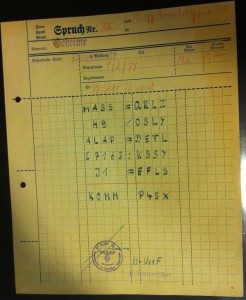
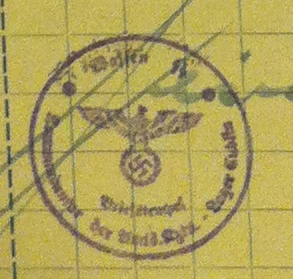
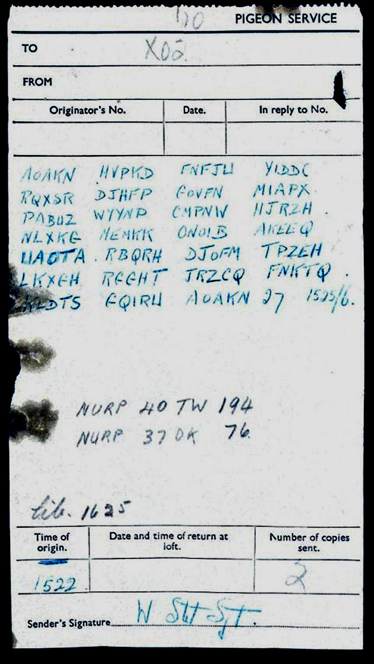
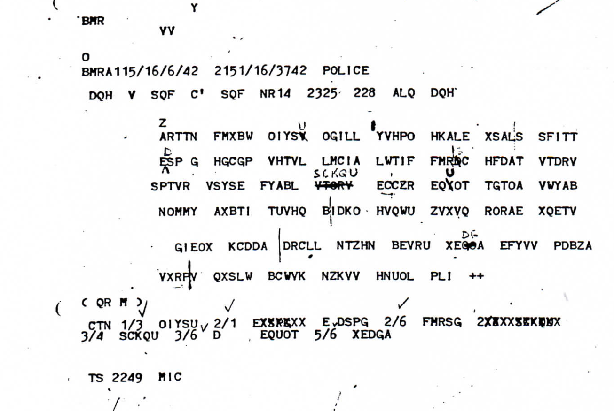
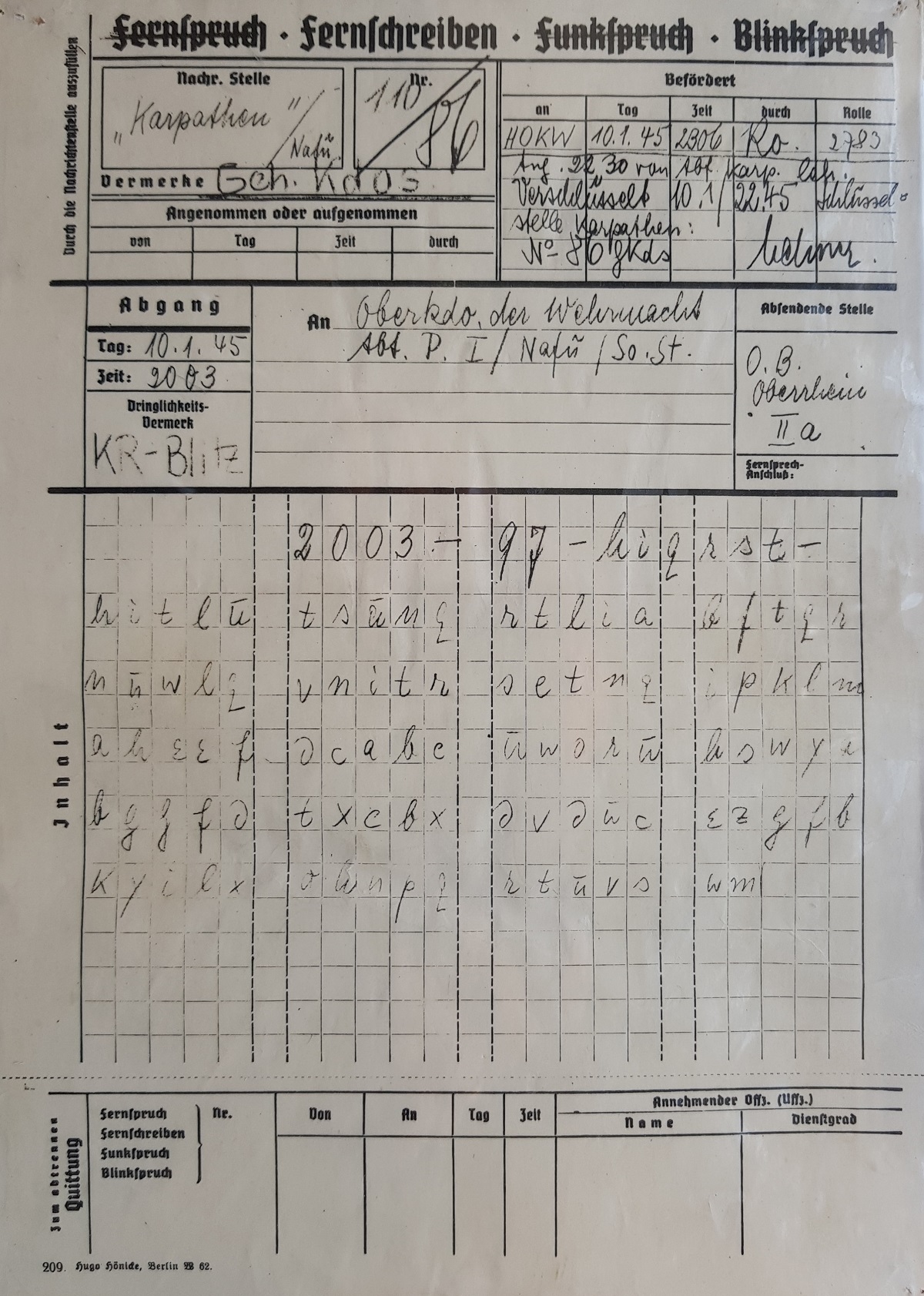


Letzte Kommentare